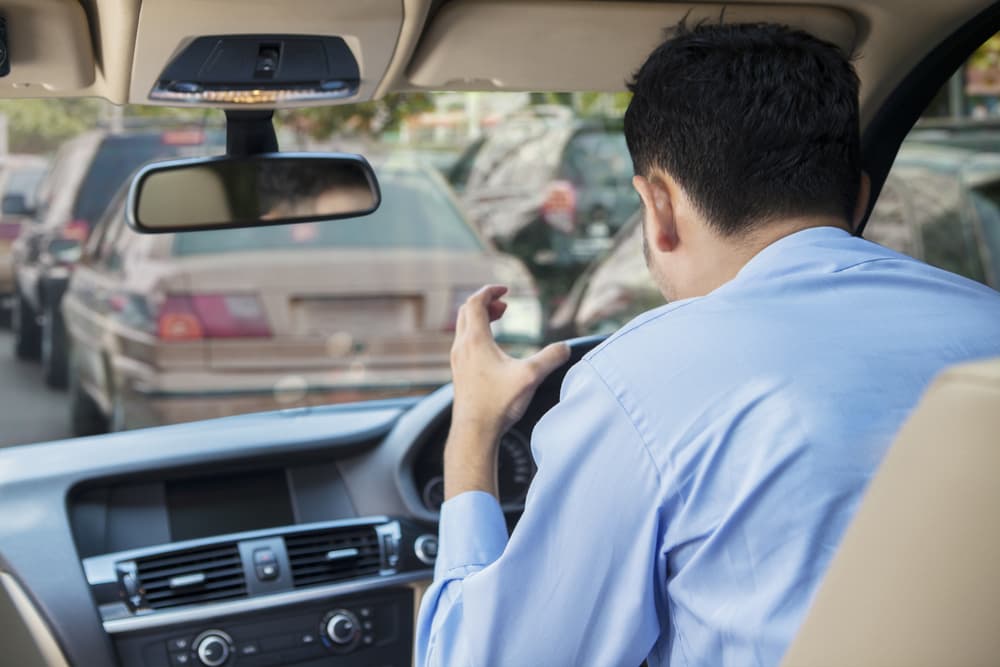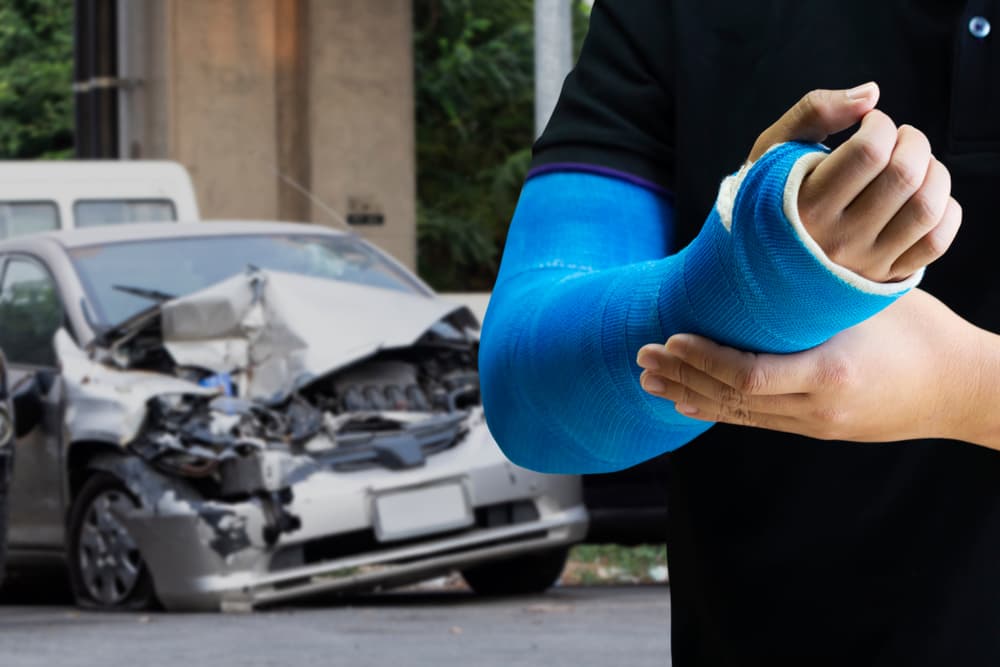Every 18 hours in America, someone becomes the victim of a road rage shooting. Beyond these extreme cases, millions of other drivers encounter aggressive behavior on our roads daily, transforming routine commutes into potentially life-threatening situations. What is considered road rage and aggressive driving behavior has evolved from isolated incidents into a widespread public safety crisis affecting drivers nationwide.
Road rage represents far more than momentary frustration behind the wheel. The National Highway Traffic Safety Administration defines road rage as intentional assault by a driver or passenger using a motor vehicle or weapon that occurs on roadways or stems from traffic-related incidents. This definition separates road rage from simple aggressive driving, elevating it from a traffic violation to a criminal offense with serious legal consequences.
The distinction matters significantly. While aggressive driving might involve speeding or following too closely, road rage crosses into criminal territory when drivers intentionally use their vehicles as weapons or engage in threatening behavior designed to intimidate, harm, or retaliate against other road users.
Schedule Your Free Consultation
Key Takeaways
- Road rage involves intentional acts of aggression behind the wheel that go far beyond aggressive driving and everyday traffic violations.
- Common road rage behaviors include tailgating, brake checking, cutting off other drivers, and physical altercations.
- These incidents can lead to serious injuries, including brain trauma, spinal damage, and emotional distress.
- Many states, including Ohio and Kentucky, prosecute road rage under criminal laws like assault or reckless driving.
- Victims may pursue civil lawsuits for compensation even if no criminal charges are filed or the driver isn’t convicted.
- A civil case requires a lower burden of proof, making it possible to hold aggressive drivers financially accountable.
- A personal injury lawyer can gather evidence, work with experts, and build a strong case for maximum compensation.
- The right attorney will protect your rights, deal with insurance companies, and fight to hold road rage drivers accountable.
The Psychology Behind Road Rage Incidents

Road rage involves psychological factors that transform ordinary people into dangerous threats on our highways. Several key elements contribute to these explosive behaviors:
Stress as the primary catalyst
Driving presents numerous stressors, including high speeds, traffic congestion, time pressures, and unpredictable actions from other drivers. Research indicates that as stress levels increase, the likelihood of road rage behavior rises dramatically.
Demographic patterns
Young males, particularly those under 33 years old, represent 96.6% of road rage perpetrators according to multiple studies. However, road rage affects drivers across all demographics, with incidents occurring regardless of age, gender, or socioeconomic status.
Territorial behavior indicators
Studies reveal that drivers who customize their vehicles with bumper stickers, decals, or other territorial markers show higher propensities for road rage behavior. The number of these markers, rather than their content, correlates with aggressive driving incidents, suggesting that territorial behavior extends from personal space into vehicle ownership.
Recognizing Different Forms of Road Rage
Road rage manifests through various behaviors, each carrying different levels of danger and legal implications. These aggressive acts typically escalate through predictable stages:
Verbal and gestural aggression
This starting point involves drivers shouting, using obscene gestures, or making threats through rolled-down windows. While seemingly less dangerous than physical confrontations, verbal road rage creates hostile environments that can escalate rapidly into more serious incidents.
Vehicular intimidation and assault
The next level involves deliberate actions using the vehicle itself as a weapon or intimidation tool:
- Aggressive tailgating at unsafe distances
- Brake checking to intimidate following drivers
- Cutting off other vehicles deliberately
- Blocking lanes to prevent lane changes
- Forcing vehicles off roadways
- Ramming or sideswiping other cars intentionally
Physical confrontations
The most extreme form occurs when drivers exit their vehicles to threaten, attack, or engage in physical confrontation with other road users. These incidents often involve weapons and can result in severe injuries or fatalities. Even seemingly minor physical altercations can escalate quickly, especially when emotions run high and adrenaline takes over.
Digital harassment
The advent of dashcams and social media has revealed another dimension: public shaming and online harassment. Some drivers now record incidents and post them online, extending road rage beyond the immediate encounter into digital spaces where victims face continued harassment.
Legal Classifications and Consequences
The legal system treats road rage incidents differently across jurisdictions, but most states recognize the serious nature of these offenses. While only 14 states have enacted specific aggressive driving laws, road rage cases typically face prosecution under assault and battery statutes, vehicular homicide charges, or reckless driving violations.
California stands alone in legally defining "road rage" as a precise, technical definition, giving it particular legal meaning within its statutes. Other states handle road rage incidents under existing criminal laws, often resulting in more severe penalties than standard traffic violations.
The burden of proof varies significantly between jurisdictions. Virginia, for example, finds it easier to prosecute road rage as reckless driving rather than aggressive driving because reckless driving charges don't require proving intent. This prosecutorial flexibility allows courts to pursue appropriate charges based on available evidence and case circumstances.
Penalties for road rage convictions can include substantial fines, license suspension or revocation, mandatory anger management classes, community service, and imprisonment. In extreme cases resulting in injury or death, perpetrators face decades in prison or life sentences, as demonstrated by a 2007 Colorado case where a driver received two consecutive life terms for causing two deaths during a road rage incident.
The Ripple Effects of Road Rage
Road rage incidents create consequences extending far beyond the immediate participants, affecting entire communities and systems:
Personal and family impacts
- Families lose loved ones to preventable violence
- Victims require long-term medical care and rehabilitation
- Children who survive or witness incidents develop lasting trauma and driving fears
- Psychological effects include anxiety, depression, and PTSD
Economic and societal costs
- Property damage and medical expenses burden families and insurers
- Lost productivity affects workplaces and communities
- Insurance companies raise premiums for all drivers
- Emergency responders divert resources from other critical needs
- Court systems face increasing caseloads of these cases
Common Types of Accidents Caused by Road Rage
Road rage incidents frequently result in specific types of collisions that tend to be more severe than typical traffic accidents. The intentional nature of these crashes often leads to devastating outcomes for innocent drivers and passengers.
High-speed collisions and reckless overtaking
Aggressive drivers engaged in road rage often exceed safe speeds while attempting dangerous overtaking maneuvers. These high-velocity impacts create catastrophic damage and severe injuries due to the tremendous forces involved. When drivers use excessive speed as a weapon or intimidation tactic, the resulting crashes frequently prove fatal.
Rear-end collisions from aggressive tailgating
Tailgating represents one of the most common road rage behaviors, creating dangerous situations where following drivers cannot react appropriately to sudden stops or traffic changes. These rear-end impacts often occur at higher speeds than typical following-too-closely accidents because the aggressive driver intentionally maintains unsafe distances to intimidate the lead vehicle.
Forced off-road incidents
Some of the most terrifying road rage scenarios involve deliberately forcing other vehicles off roadways. These incidents can result in rollovers, collisions with trees or barriers, or crashes in areas without protective infrastructure. Victims often sustain severe injuries when their vehicles leave the roadway at high speeds.
Intentional ramming and sideswipe collisions
In extreme cases, enraged drivers use their vehicles as weapons, deliberately ramming or sideswiping other cars. These intentional impacts often catch victims completely off guard, preventing the victim from taking defensive actions that could have reduced injury severity. The malicious intent behind these crashes frequently results in criminal charges beyond standard traffic violations.
Intersection confrontations and T-bone crashes
Road rage incidents at intersections can lead to devastating broadside collisions when aggressive drivers run red lights, ignore stop signs, or deliberately block other vehicles' paths. These T-bone crashes often result in severe injuries because vehicles offer less protection from side impacts compared to front or rear collisions.
Injuries Commonly Sustained in Road Rage Accidents

The violent nature of road rage incidents often produces more severe injuries than typical motor vehicle accidents. Victims may suffer both physical trauma from the crash itself and psychological damage from the intentional, threatening nature of the encounter.
Traumatic brain injuries and concussions
The high-impact forces in road rage collisions frequently cause head trauma ranging from mild concussions to severe traumatic brain injuries. These injuries can affect memory, cognitive function, personality, and motor skills, requiring extensive rehabilitation and potentially causing permanent disabilities.
Spinal cord injuries and paralysis
Sudden, violent impacts from intentional ramming or high-speed crashes can damage the spinal cord, potentially resulting in partial or complete paralysis. These life-altering injuries often require lifetime medical care and significantly impact victims' independence and quality of life.
Fractures and broken bones
The extreme forces involved in road rage crashes frequently cause multiple fractures, particularly in the extremities. Complex fractures may require surgical intervention, metal implants, and extended physical therapy, potentially leaving victims with permanent limitations or chronic pain.
Internal injuries and organ damage
High-impact collisions can cause serious internal injuries, including damaged organs, internal bleeding, and abdominal trauma. These injuries may not be immediately apparent but can prove life-threatening without prompt medical intervention.
Psychological trauma and PTSD
Beyond physical injuries, road rage victims often experience significant psychological trauma. The intentional, threatening nature of these incidents can lead to anxiety, depression, post-traumatic stress disorder, and driving phobias that persist long after physical injuries heal.
State Laws and Penalties in Ohio and Kentucky
Both Ohio and Kentucky take road rage incidents seriously, though they handle prosecution under different legal frameworks.
Ohio's approach to road rage prosecution
Ohio prosecutes road rage cases under existing assault, vehicular assault, and reckless operation statutes. Penalties can include substantial fines, license suspension, mandatory counseling, and imprisonment. Aggravated vehicular assault charges apply when serious physical harm results from road rage incidents.
Kentucky's legal framework
Kentucky similarly handles road rage under assault and wanton endangerment laws. The state's reckless driving statute covers many road rage behaviors, while more serious incidents face prosecution under assault or vehicular homicide charges, depending on the outcome.
Can You File a Civil Lawsuit if No Criminal Charges Are Filed?
Yes. Victims of road rage can file a civil lawsuit for damages even if the at-fault driver isn’t criminally charged or convicted. The criminal justice system and the civil court system operate independently, each with its own burden of proof and objectives.
Criminal cases focus on punishing the offender and protecting public safety. Prosecutors must prove guilt “beyond a reasonable doubt,” which is a high standard. If they don’t feel they have enough evidence to meet that threshold—or if a jury finds the defendant not guilty—the criminal case may fail.
Civil lawsuits, on the other hand, are designed to compensate victims. To win, you only need to prove that the defendant was responsible for your injuries by a “preponderance of the evidence”—essentially, that it’s more likely than not they were at fault.
This means:
- You can pursue compensation even if the driver isn’t arrested or charged
- A criminal acquittal doesn’t block you from filing a civil claim
- You may use some of the same evidence (dashcam footage, eyewitness testimony, police reports) to support your civil case
If you’ve been injured in a road rage incident, speaking to an experienced personal injury attorney can help you understand your full legal options, regardless of what happens in criminal court.
Statute of limitations considerations

Every state has a statute of limitations for personal injury and wrongful death claims that sets the timeframe for taking legal action. The deadline is generally two to three years.
In Ohio, for example, victims typically have two years from the date of injury to file personal injury claims related to road rage incidents. Kentucky’s statute of limitations is unusually short. It provides a one-year limit for personal injury and wrongful death cases, making prompt legal action essential for protecting your rights.
Prevention Strategies and De-escalation Techniques
While you cannot control other drivers' behavior, certain strategies can help you avoid becoming a road rage victim or perpetrator.
Defensive driving practices
- Maintain safe following distances to avoid aggressive tailgaters
- Use turn signals consistently and change lanes gradually
- Avoid eye contact with aggressive drivers
- Do not respond to provocative gestures or behavior
- Keep doors locked and windows up in confrontational situations
- Drive to a public place, such as a police station, fire station, or a busy shopping center, where you can seek help if needed.
Don’t Let a Driver’s Road Rage Control What Happens Next
If you’ve been injured in a road rage incident, you deserve more than just an insurance settlement; you deserve justice. Road rage “accidents” aren’t ordinary crashes. When someone uses their vehicle as a weapon, the emotional and physical toll can last long after the crash. A skilled car accident lawyer in Cincinnati can help you hold that driver accountable and pursue the full and fair compensation you need to recover.
O’Connor, Acciani & Levy proudly serves clients throughout the Cincinnati metro area, including Florence and Covington, Kentucky, as well as Columbus, Ohio.
We understand how overwhelming it can be to deal with medical bills, lost wages, and trauma after a violent encounter on the road. That’s why we offer free consultations and work on a contingency fee basis. You don’t pay unless we win your case. The first step starts with a simple phone call. Call us today at (513) 241-7111 or contact us online. Our record speaks for itself, we win for you.